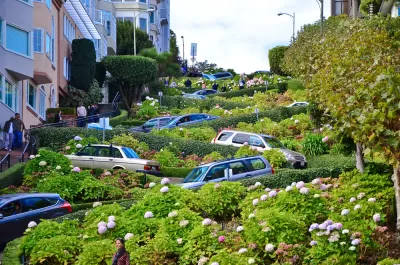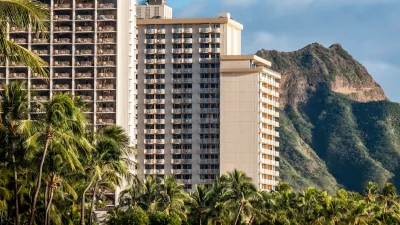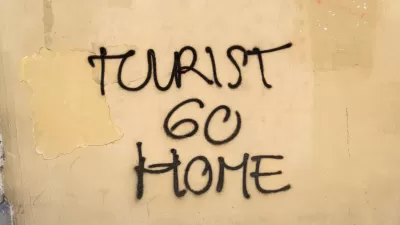In tomorrow's citywide election, San Francisco voters are faced with a suite of ballot propositions essentially offering a referendum on hot button issues like gentrification, neighborhood character, and supply vs. demand.

For years now, the news from San Francisco has spoken of bubbling over tensions with regard to the demographic forces at work as the booming tech industry takes a greater hold on the city's neighborhoods. The chickens will come home to roost, tomorrow, however.
"On Tuesday, San Francisco voters will weigh in on 11 propositions and candidates for various offices in an election that has essentially become a referendum on the city’s booming technology industry and a vehicle for voters to vent as they seethe over the sky-high housing prices that have come with it," according to an article by Conor Dougherty.
Dougherty adds: "Seven of the propositions on the San Francisco ballot are either directly or indirectly related to the technology industry and housing costs." That includes Proposition F, which will limit the number of short-term rentals (i.e., Airbnb supply), and "two affordable-housing measures and a proposal to help old-line businesses make rent in neighborhoods that are filling up with boutiques and organic restaurants."
Savvy observers of the San Francisco political scene will also recall Proposition I, or the "City of San Francisco Mission District Housing Moratorium Initiative," which would place an 18-month moratorium on the construction of market rate, multi-family residential developments.
FULL STORY: San Francisco Ballots Turn Up Anger Over the Technical Divide

Planetizen Federal Action Tracker
A weekly monitor of how Trump’s orders and actions are impacting planners and planning in America.

Congressman Proposes Bill to Rename DC Metro “Trump Train”
The Make Autorail Great Again Act would withhold federal funding to the system until the Washington Metropolitan Area Transit Authority (WMATA), rebrands as the Washington Metropolitan Authority for Greater Access (WMAGA).

The Simple Legislative Tool Transforming Vacant Downtowns
In California, Michigan and Georgia, an easy win is bringing dollars — and delight — back to city centers.

The States Losing Rural Delivery Rooms at an Alarming Pace
In some states, as few as 9% of rural hospitals still deliver babies. As a result, rising pre-term births, no adequate pre-term care and "harrowing" close calls are a growing reality.

The Small South Asian Republic Going all in on EVs
Thanks to one simple policy change less than five years ago, 65% of new cars in this Himalayan country are now electric.

DC Backpedals on Bike Lane Protection, Swaps Barriers for Paint
Citing aesthetic concerns, the city is removing the concrete barriers and flexposts that once separated Arizona Avenue cyclists from motor vehicles.
Urban Design for Planners 1: Software Tools
This six-course series explores essential urban design concepts using open source software and equips planners with the tools they need to participate fully in the urban design process.
Planning for Universal Design
Learn the tools for implementing Universal Design in planning regulations.
Smith Gee Studio
City of Charlotte
City of Camden Redevelopment Agency
City of Astoria
Transportation Research & Education Center (TREC) at Portland State University
US High Speed Rail Association
City of Camden Redevelopment Agency
Municipality of Princeton (NJ)




























